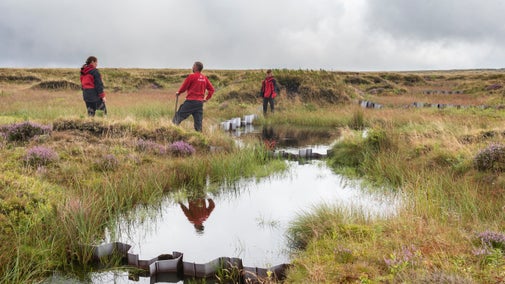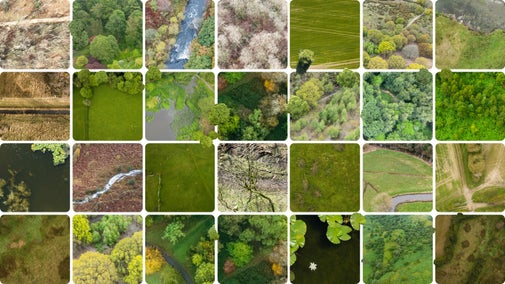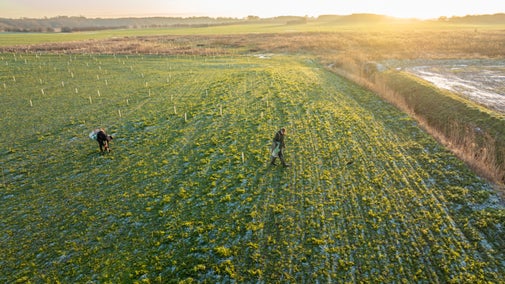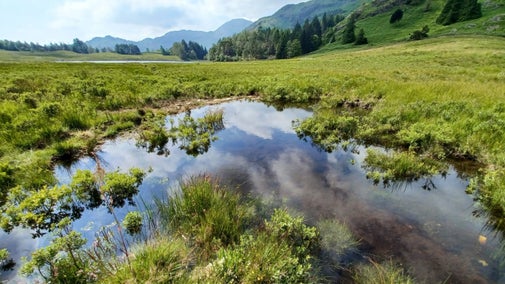
How we're tackling climate change together
Climate change is the biggest threat to the places in our care and in this video you can get a glimpse of the challenges we're facing together.

We're part of the global fight against climate change. It's the single biggest threat to the precious landscapes and historic houses we care for. We're adapting to changing weather patterns and working hard to address biodiversity loss and the damage caused by wild fires, heavy rain, increased humidity, high winds, droughts and shifting shores. Find out how we're healing climate harm and reducing carbon emissions.
We’ve now reached our target to generate 50 per cent of our own energy from renewable sources, against a 2008 baseline. This follows an ambitious scheme set up in 2013 to grow our own energy supply and reduce our use of fossil fuels. From mountain hydros in the fast-flowing streams of the Lake District and Eryri (Snowdonia) to biomass boilers and heat pumps that help preserve rare objects, we've installed 138 renewable energy projects in nine years. In total, they generate 24 million kilowatt hours of energy each year — enough to power more than 8,400 homes. The second phase of the programme will further reduce fossil fuels at 100 of the highest emitting buildings we look after and is part of our efforts to reach net zero by 2030.
Wildlife, beaches, woodlands, archaeological sites, historic buildings, gardens and parklands are all under threat.
Rising temperatures are damaging some of the finest paintings in our care, while pests and diseases pose a greater threat to collections, trees and plants. Archaeological discoveries are also in danger of being lost. It is the single biggest threat to the precious landscapes and historic houses we care for.
We're having to make building alterations to cope with flooding and manage the effects of a changing coastline and rising sea levels.
Almost three quarters of the most important land in our care is vulnerable to climate change. Not only do these landscapes support wildlife, they also store carbon.
Biodiversity supports all life but it's in rapid decline. Plants, animals and ecosystems are at risk. We can only meet the challenge of climate change by helping nature to heal. This is why we’re creating and restoring wildlife habitats such as woodlands and peatlands.
By combining our existing knowledge about climate change and how it affects species distribution and habitats, we can better understand how to target our efforts to conserve nature and wildlife for the future – helping to tackle the biodiversity and climate crises together.
We can’t find the solutions to climate change without also tackling the biodiversity crisis. They are both inextricably linked to each other and to the future of humanity.
We've developed a hazard map that illustrates the threat climate change poses and highlights ways to tackle it.
Working to a worst-case scenario model, the map plots places alongside existing data on climate change-related events, such as flooding and coastal erosion.
It's the first map of its kind that collates and plots data in this way and will help the us and other organisations identify the hazard level facing countryside locations, monuments, coastlines and historical sites in England, Wales, Northern Ireland and Scotland.
The map is drawn using a ‘worst-case scenario’ in which gas emissions continue their current trajectory unchecked with 5km hexgrids plotting the threat level from one to five.
We’re also tackling the causes of climate change by reducing emissions, caring for the land that captures and stores carbon and advocating Government to adopt policies that will help us all look after the places you love to visit. But the scale of the threat is breathtaking, and we can't do all of this without your help.

Climate change is the biggest threat to the places in our care and in this video you can get a glimpse of the challenges we're facing together.

Together, we're securing our future with action on climate and the environment. Learn more about how we're responding to the changing climate at places in our care.

Nature is depleting faster in the UK than almost anywhere else in the world. Donating to Adopt a Plot is a small way you can take a big step towards restoring nature across whole landscapes.

Climate change is the greatest threat to the coastline, countryside and historic buildings in our care. Our new report, A Climate for Change: Adaptation and the National Trust, reveals how we’re tackling its causes and effects and identifying future hazards. From protecting and planting trees to nature-friendly farming, helping people, heritage and nature adapt to a changing climate is at the heart of everything we do.

As the Government releases its five-year National Adaptation Programme, we share new research that shows that the UK is 'lagging behind' in preparedness for climate change.

The small actions we take can help make big changes. There are lots of ways to make a difference, find out how you can play your part with ideas from planting trees to going peat-free.

Climate change is the biggest threat to people and nature but with your support, the landscapes we care for can adapt to the challenges they face. Donate today to bring back wildlife, keep rivers flowing and protect woodlands and peatlands.